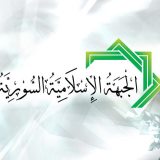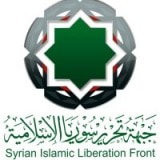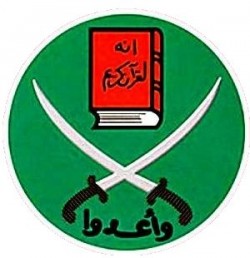This article continues exploring various scenarios around the theme of “a real victory in Syria” by one or the other groups fighting on the ground, starting first with a Nationalist Islamic Syria, and then moving to a Syria under the leadership of the Muslim Brotherhood. For each scenario, current estimates of likelihood will be outlined and some indicators influencing probability will be suggested.
Scenario 3.2.: A Nationalist Islamic Syria?
If the victorious groups are Sunni Islamist and Salafi-Nationalist factions, then they would implement an Islamic state in Syria. According to Lund, and assuming those groups follow the January 2013 SIF’s official charter, they would “establish a state guided by sharia law at all costs, while also making some gestures towards moderation and tolerance for minority groups”, (p.16) or in their own terms they would “… build a civilized Islamic society in Syria, ruled by the law of God” (p.19).
They would be opposed “to secularism and democracy” (p.17) because “Islamic Shari’a cannot be put to a vote” (p.20) however, “elections could still be used as a system to appoint representatives and leaders…” as long as modalities and potential parties are bound by Shari’ia.
Rather than adopting a confrontational position they would be “eager to reach a modus vivendi with the West”, as shows their willingness “to open communication channels” during the war. (p.18)
On the path to victory, as they would have given as much attention to war as to building the real foundations for an Islamic society (“the civilian movement, from which springs missionary, educational, humanitarian, media, political and [public] service [movements]” (19), once in power their task towards stabilizing peace would be eased. They would seek to maintain, expand and deepen those already existing structures and processes. They would focus on Syria and its needs.
Succeeding fully in building this type of peace in Syria would most probably be hardest and most challenging as far as non Sunni Islamist groups are concerned. How could the very different faith and ways of life be accommodated by a state abiding to Shari’a ? Could they be successfully integrated and how? Or would this lead to a renewal of civil war, to multiple exodus, and in the case of the Kurds to a semi-autonomous or fully independent Kurdistan?
Assuming that the best way to integrate those communities are not found, would this lead again to foreign involvement and, as a result to heightened possibilities for war?
Estimating Likelihood for Scenario 3.2.
The more pragmatic and more Syria-centric agenda of those groups, as well as the number of fighters (between 47000 and 67000 fighters if estimates (Lund, Ignatius, see detail here) for the SIF and the SLF/SILF are added), and their structure, imply that this scenario is less unlikely than the previous one. However, considering the military strength of the Pro-Assad groups, as well as the rising regionalization of the civil war, it is still far from being likely.
Some indicators that could be followed as influencing the likelihood of this scenario:
- Continuing disunity and internecine struggle within the “moderate” opposition (NC) with impact on the capacity to garner support without and within and related consequence on military operations.
- Success or failure in the opening of communication channels with the West – and more broadly internationally – by such groups on the mode of what is done by the SIF, and in the ability to convince about their pragmatic, Syrian centric approach.
- Capacity of those groups to endeavour and succeed in providing the Syrian population with “public services” both according to the groups ideology and without creating any adverse reaction.
- Increasing regionalisation of the conflict and international wish to put an end to it.
- Change in the overall configuration of the external support.
Scenario 3.3.: A Secular Syria?
This scenario (or rather a variation around this theme) would be meant to happen if the victorious group is the National Coalition for Syrian Revolutionary and Opposition Forces (NC) and its corresponding fighting arm, the Supreme Joint Military Command Council (SJMCC or SMC).
This would first presuppose that the various groups affiliated with the SMC succeed in uniting their forces to fight, while the NC would find a widely accepted way to elect representatives and to function. Notably, this would imply that internecine struggles, as were for example displayed during the last week of May 2013 (e.g. Barber for Syria Comments, 27 May 2013), between more secular and moderate groups, on the one hand, and, on the other, the Muslim Brotherhood – as well as their supports – stop, and that whatever alliances were made with various factions hold and are honoured. The NC and the SMC would also need to find a way to manage the “correct” support from their allies, i.e. enough and in the right manner to have sufficient fire power to fight successfully and to deliver to the population they seek to mobilize and who are under their authority, yet without creating an adverse reaction among Nationalists who could accuse them to sell Syria to foreign interests.
Considering the differences existing between the Muslin Brotherhood and other groups, we may imagine two possible sub-scenarios.
Scenario 3.3.1. A Muslim Brotherhood’s Syria
Assuming a NC with a Muslim Brotherhood strong leaning wins, and that it has achieved enough power over the fighting forces of the SMC, we would have a system that “supports democratic elections and many political freedoms while espousing a vision for a Syrian state that implements Sunni Islamic frames of reference for its legislation.” (O’Bagy, Jihad in Syria, Sept 2012 :17).
Indeed as Aymenn Jawad Al-Tamimi notes, the “Muslim Brotherhood’s conception of applying Islamic law [is] through gradual action…step by step, in order to facilitate understanding, studying, acceptance and submission” (for Syria Comment, 20 March 2013). If we turn to the text used as reference by Al-Tamimi, we not only find a description of this needed gradual action, but also reference to the ultimate aim, the restoration of the Caliphate (see previous post for more on the Caliphate).
“We must not impose Islamic shari’a, forcing the people to adopt something about which they are ignorant and with which they are unfamiliar… If we do this, [various] ploys will be used to circumvent it, and there will be hypocrisy. [People] will exhibit Islamic [behavior] only outwardly…
“Noah, peace be upon him, received a clear sign, a stark vision, a prophecy, and mercy that his people did not understand… Noah could not force or impose [his faith upon the people]. He determined the principle of choosing [one’s] faith [as a result of] persuasion and reflection, [instead of] oppression, authority, condescension, and coercion. …
“There is no other way but gradual action, preparing the [people’s] souls and setting an example, so that faith will enter their hearts… Gradual action does not impose Islam at once, but rather step by step, in order to facilitate understanding, studying, acceptance, and submission.
…
“The Prophet, peace be upon him, acted in a gradual manner, by first preparing the people, and then [preparing] family, society, state, and finally the caliphate…
“I ask the honorable Al-Azhar to rally the Islamic streams in order to unite the Muslim word and effort, restore the caliphate, and prepare a practical plan to implement the law of Allah the Exalted. ” (Article on Muslim Brotherhood Website: Implement Shari’a in Phases, June 11, 2011; MEMRI, July 5, 2011, Special Dispatch No.3969)
This scenario can thus be seen as a mix of scenario 3.2. in terms of pace and pragmatic approach, being even ready for slower changes, with, at the beginning, a less strict view of what can be done or not, and of scenario 3.1. in terms of ultimate goal, but on a much longer timeframe, and certainly with different means.
Estimating Likelihood for Scenario 3.3.1.
This scenario, so far, seems to be quite unlikely considering the weakness and disunity of the NC and of the SMC. Furthermore, the very history of the Muslim Brotherhood in Syria, implying, as explained by O’Bagy (Jihad in Syria, 2012: 11-13), the distrust of the population and the weakness of their presence and network within Syria, would make it even less likely, despite the strength of the Muslim Brotherhood within the NC today.
Some indicators that could be followed as influencing the likelihood of this scenario
- Strong external support (up to external intervention) compensating for absence of legitimacy, of support network and of presence on the ground and allowing to create one
- Ability to unite factions under Brotherhood’s leadership;
- Absence or disappearance of better alternative for various actors, notably the population
- Successful “hearts and minds” campaign within Syria to win over the population and build legitimacy.
Scenario 3.3.2.
Featured image: From the Islam Army Facebook Page





